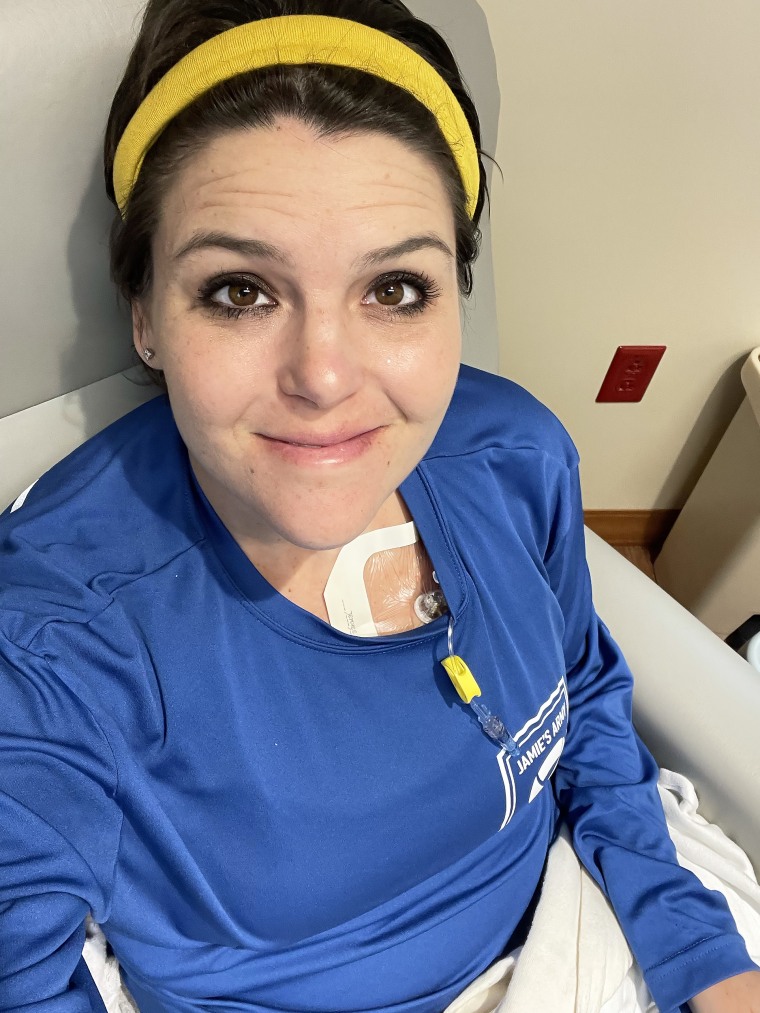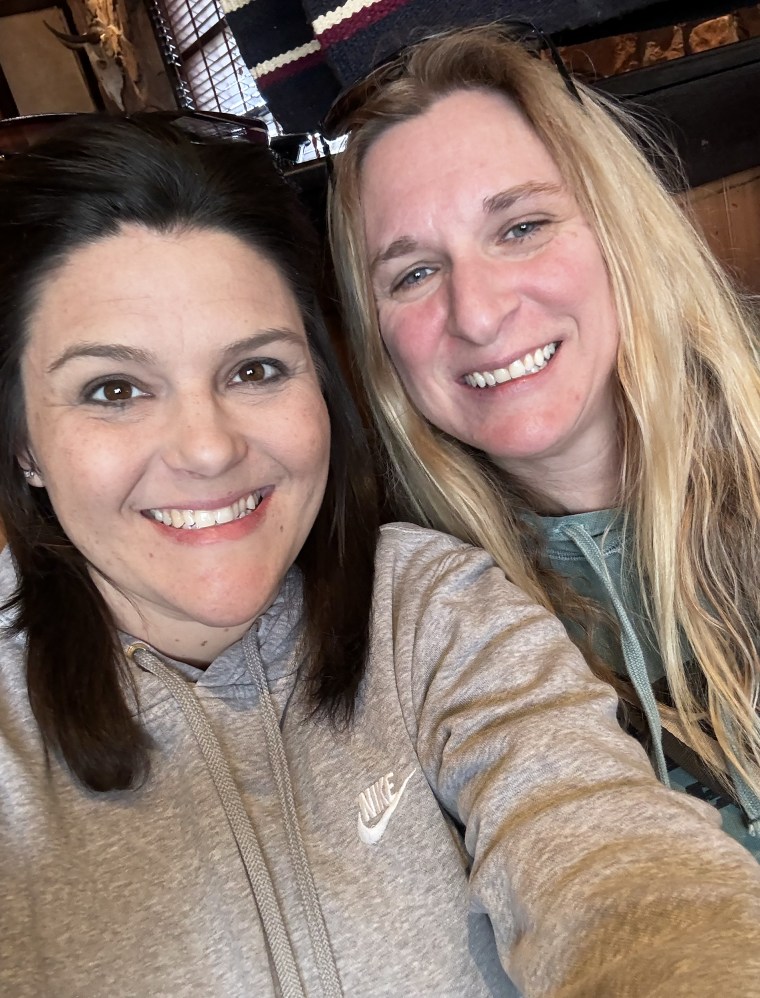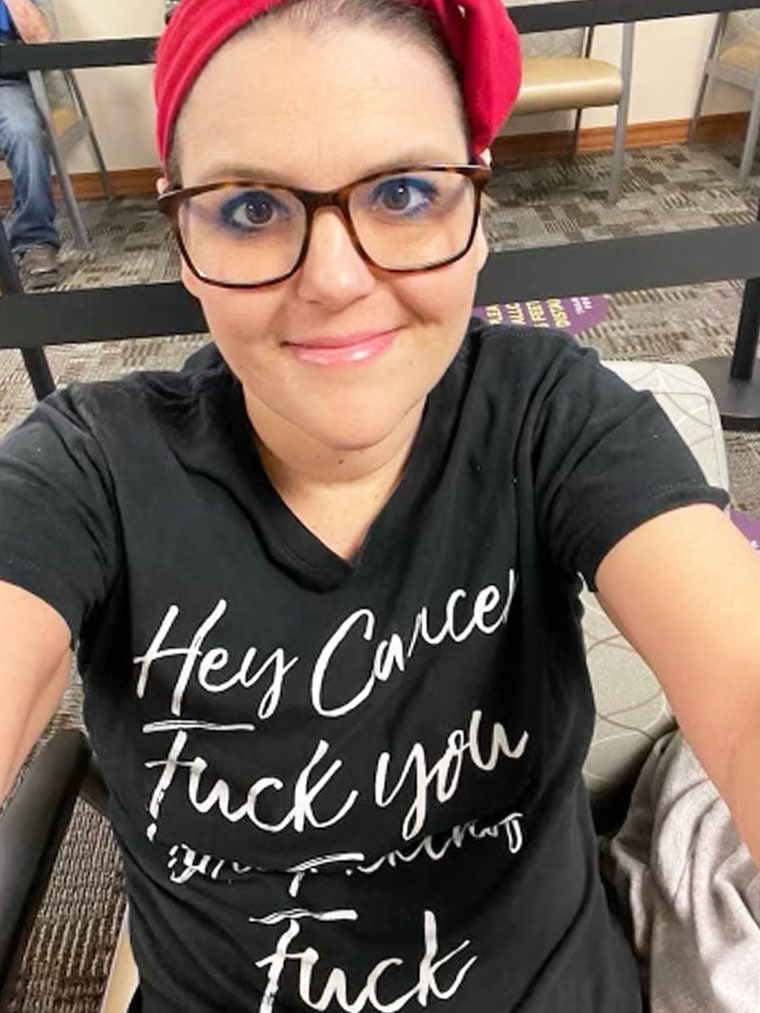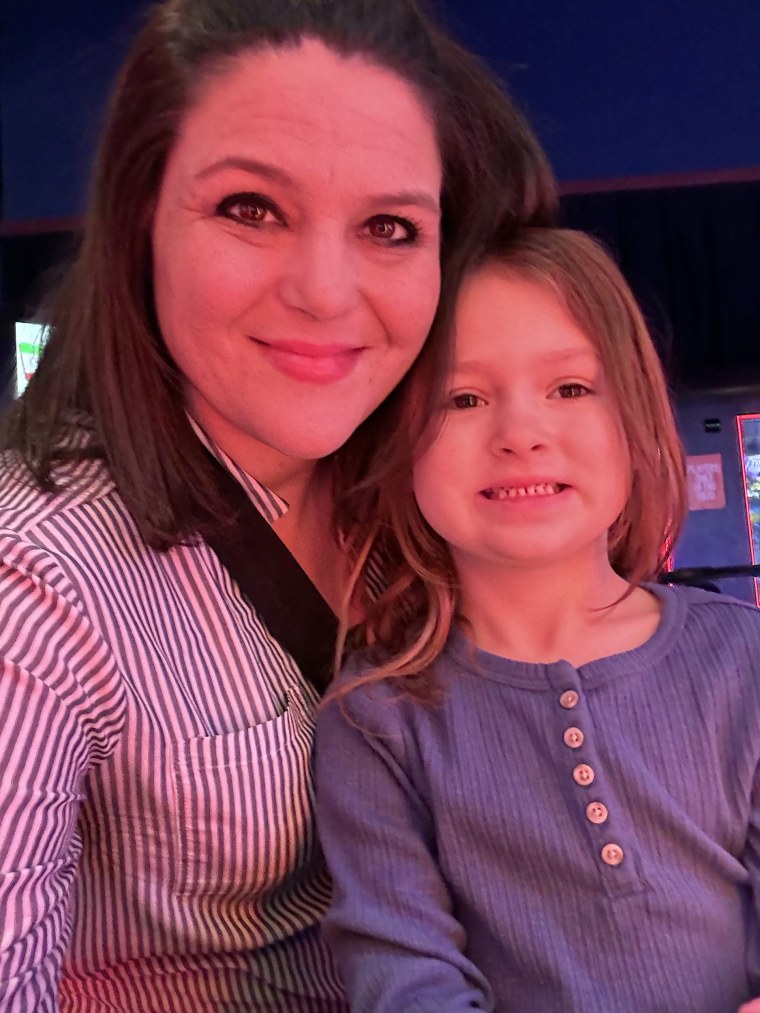When Jamie Ball felt sharp pain in her side, she believed she was experiencing gallbladder troubles. After about three weeks of discomfort, she visited the emergency room hoping they’d give her something to end the agony.

“I thought it was gallstones,” the 37-year-old from Indiana, Pennsylvania tells TODAY.com. “It was to the point that I couldn’t tolerate it anymore.”Doctors examined her and ran tests, and they soon knew what was wrong. Ball had colon cancer.
“I was in complete shock because that thought didn’t even cross my mind,” she says. “I am young.”
Soon, Ball learned the cancer had metastasized to her liver — she had stage 4 colon cancer — and because of where the tumors were, doctors knew her chance of surviving was low. That’s when she learned she might be a candidate for a liver transplant.
“I was under the impression that I could have a liver resection," she says. Liver resection is a surgery to remove the diseased part of the liver. But because doctors found cancer on both sides of Ball's liver, she wasn't eligible for a resection. "So my only chance was really a living donor,” says Ball.
From diagnosis to transplant
When the pain in her side began in fall 2021, Ball waited about three weeks before seeking care at the emergency room in November 2021. After doctors realized she had colon cancer, they moved quickly to start chemotherapy in December. Ball underwent 12 rounds to shrink her tumors.
“I responded very well,” she says. “Chemo was really hard. I was super sick. I lost about 75, 80 pounds. I could not eat. I was disgusted by food.”
Ball also developed neuropathy in her hands and feet — nerve damage brought on by chemotherapy that can be painful according to the American Cancer Society. And any cold drinks felt like “razor blades in my throat,” she said. After finishing chemotherapy in early 2022, Ball underwent a colon resection where doctors removed the remaining cancerous portion of her colon.
Recovering from surgery felt “pretty easy,” she says. But she also knew she had tumors in her liver that didn’t seem to be going away.
“I was in limbo,” Ball says.
Doctors thought a liver transplant would help, but that, too, felt complicated to Ball.
“If I got placed on the recipient list, I’d be towards the bottom because my liver was still highly functioning,” she explains.
Doctors recommended a living donor, when a person with a matching organ donates part of their liver to the person who needs it. After undergoing tests, she learned she qualified for a living donor transplant but then she needed to find one. She requested help on social media and many people volunteered.
At first, doctors considered Ball’s sister. “She went to the second round of testing (but) her liver was millimeters too small,” Ball says. “She was rejected as a donor.”

Luckily, because so many people wanted to help, Ball had other options. A former coworker, Jennifer, volunteered to see if she could donate part of her liver.
“She was a match,” Ball says. “Ultimately, she was approved.”
The night before her February 2023 transplant surgery, Ball couldn’t “even sleep a minute” because she worried about the lengthy surgery and what doctors would find. If there were any cancer cells, they could not transplant the organ.
“I had racing thoughts the whole night,” she says. “I wasn’t completely sure that the transplant would happen.”
This felt incredibly scary because getting a new liver was Ball’s “only chance at life.”
“When I woke up, I didn’t know if we went through with it,” she says. “Then they told me, ‘Yeah, everything was good. You got your transplant.’”
Liver transplants and colon cancer
While liver transplants historically have been used to treat liver diseases, such as hepatitis B and C or cirrhosis, recently doctors have used them successfully to treat liver cancers, says Dr. Lorenzo Machado, a transplant surgeon at Allegheny Health Network in Pittsburgh.
It's made doctors wonder whether a liver transplant could help people with cancers that originate in other organs but have spread only to the liver. Researchers in Norway published research that showed it has promise in colon cancer, he says.
When colon cancer spreads throughout the entire liver in colorectal cancer patients, survival rates for these patients are low using traditional therapies, Machado says.
"A patient being treated with chemotherapy alone being at best 10 to 20% (five-year survival)," he tells TODAY.com.
For patients whose colon cancer spread to their livers and had a subsequent transplant, they had a five-year survival rate of "around 80%,” Machado notes. Doctors look at cancer treatment's effectiveness based on how likely a patient is to live for five years following diagnosis, according to the National Cancer Institute.

Machado, who performed Ball’s transplant, says this gives patients with cancer on both liver lobes a treatment option they would not otherwise have had. Having additional treatment to help colorectal cancer patients remains important especially as rates have been increasing in young people. Ball was one of those cases.
“Jamie had cancer throughout her liver,” Machado says. There was no other option.
Ball underwent a living donation where a healthy person donates part of their liver to a person who needs it. The donor can still live a normal life without a full organ, Machado says.
“The liver has the potential to regenerate,” he says. “If we remove the right side, it doesn’t form a whole new right side. But the left side … will grow, will hypertrophy to meet the needs of the patient.”
Machado notes there are some drawbacks to a liver transplant to treat colon cancer. If a patient still has good liver function, like Ball did, they are put on the bottom of the transplant list. The wait for a suitable organ can take years so patients have to find someone open to giving away about 55% of their liver, he says.
“It’s a big ask (for) someone who has just been diagnosed with cancer … ‘Well, I have this treatment for you, but I need you to find someone who’s willing to donate a liver to you,’” he says.
But Machado's ability to do the surgery relies on someone offering to give a patient a part of their liver. For some, it can be difficult to find a person willing to undergo a long screening process and elective surgery to help.
The other downside to receiving an organ donation is that patients need to take anti-rejection medications for the rest of their lives. “Patients are on lifelong immunosuppression as they as they have their organ transplant,” Machado says.
Machado says liver transplants offer hope to patients with colon cancer on both lobes of their liver.
“If we can offer this to a patient, we can potentially improve their survival threefold,” Machado says.
‘It’s incredible’
Ball spent about a month in the hospital after surgery as she healed. About six months after her transplant, Ball felt normal again. Ball has three children, Bella, 15, Hunter, 9 and Olivia, 5. While she was being treated for cancer, loved ones helped her and her husband by bringing meals and watching the children when needed.
“Everybody stepped up,” she says. “It took a whole army.”

Before her liver transplant, Ball knew her odds of survival were low, about 15%, so she told her children about her diagnosis. They tried to help as much as they could.
“My youngest daughter didn’t exactly understand,” Ball says. “When I lost most of my hair, she would brush what I had left and be like, ‘Mom you look like a princess.’ She was always encouraging me and loving me and cuddling.”
Going from thinking she was dying to now being cancer free for a year has been awesome for Ball.
“It’s incredible. It just doesn’t seem right like I’m waiting for the shoe to drop,” she says. “I did say I wanted to get the word out about organ donation and colon cancer screening and now I’m doing that so it’s pretty amazing.”
Ball feels grateful for the medical team and her friend who selflessly donated her liver to help her.
“I want people to learn that organ donation is amazing — to be able to give someone the gift of a second chance at life. I would have missed my kids growing up, their weddings, their graduations,” Ball says. “I have a 5-year-old that would have not had a mom if it wasn’t for the donation that saved my life.”